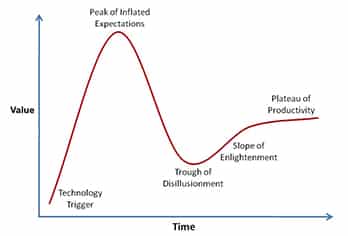
I recently had the opportunity to interview Paul Liberatore, who is developing a new Sales Enablement practice at software test automation firm Tricentis. Paul has 30 years of experience in sales enablement (way before it was labeled as such) and is the go-to-guy to create new sales enablement programs from scratch. I asked him what he thought about the current state of Sales Enablement in these times of uncertainty, and if it could mean the “Death of Sales Enablement”.
-
Research was indicating that even before this crisis, the glean might have been coming off the Sales Enablement rose already. In fact, according to CSO Insights:
- 80% growth- Between 2016 and 2017, the percentage of organizations with sales enablement jumped from 33% to 59%
- 1.5% – Since then however, the growth has slowed. Two years on, the percentage of organization who have implemented sales enablement grew to only 61% (an anemic 1.5% annualized growth).
- 3 out of 4 falling short – There is general disappointment with current sales enablement efforts. The percentage of sales enablement organizations that met or exceeded stakeholder expectations dropped from 36% in 2018 to 28% in 2019. This means that almost 3 out of every 4 sales enablement groups are falling short.
So why the slowdown and dissatisfaction in all our Sales Enablement hard work?
The answer appears in the Gartner Hype Cycle, charting the perceived value of a solution over time. For Sales Enablement, the research points to a peak of inflated expectations a few years ago, where the technology was perceived as the silver bullet to fix sales performance.
However, the recent slowdown points to a new phase in Sales Enablement perception. Gartner terms this the Trough of Disillusionment, where the promise of Sales Enablement has fallen short of lofty expectations, and Executives are now questioning the wisdom of their sales enablement investments.
Now with extreme economic uncertainty, the disillusion can turn into divestiture. According to Paul, he believes that most Executives perceive Sales Enablement as a cost center versus a growth engine. And in times of belt tightening, cost centers are perceived as overhead that can be reduced or cut.
As a Sales Enablement leader, Paul indicated that we have to change the perception that Sales Enablement is falling short of expectations, and that it is overhead that can be reduced to lower costs. And I believe this effort has to be PROACTIVE. We cannot wait for the Executives to ask “what have you done for us lately”. Instead, we have to make the strong case for why Sales Enablement is not just needed, but that even more investment might be warranted.
To change perception, you have to prove the business value and realized ROI from Sales Enablement efforts. This is NOT a report on usage, content views, consumption or satisfaction, all metrics that show the tools are being used, but NOT indicating the contribution to the business growth and operating margin. This is what Executives care about.
What is needed is a tally of the incremental business outcomes: the improvement in quota achievement, win rate, deal size, sales cycle, retention.
And we recommend you do this in a way that shows direct attribution to Sales Enablement, not just chalked up to “luck”. This means not just measuring these key performance indicators (KPIs) but leveraging contrast to highlight the contribution: The performance difference in sellers and sales performance between before and after key Sales Enablement, content and campaign launches and programs, and between those sellers and partners who are leveraging the systems, content and practices, and those who are not.
Your Sales Enablement technology partners should review Realized ROI in every QBR, and deliver reports allowing you to connect the dots to tangible business value improvements.
The Bottom-Line
Like other groups within your organization, sales and marketing will be asked to “do more with less”.
To ensure your professional survival through the crisis, it is imperative that you evolve to proactively prove the business value contributions of Sales Enablement to your Executives and organization. Contrasting the performance and deal impacts of before versus after initiatives, and those leveraging with those who do not.
Source: CSO Insights – The Fifth Annual Sales Enablement Study
https://www.csoinsights.com/blog/the-fifth-annual-sales-enablement-study-released-today/
#salesenablement #Gartner #intelligence #ROI #businessvalue #hypecycle #salestechnology #salestech #salestools #sellingtools #salesoptimization #salesperformance #KPIs


Comments are closed.